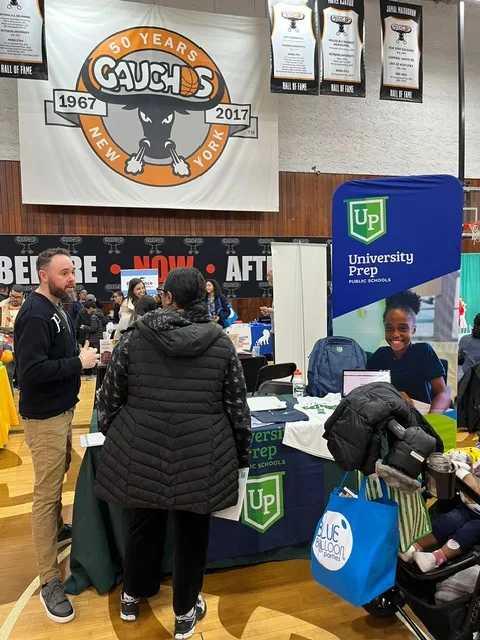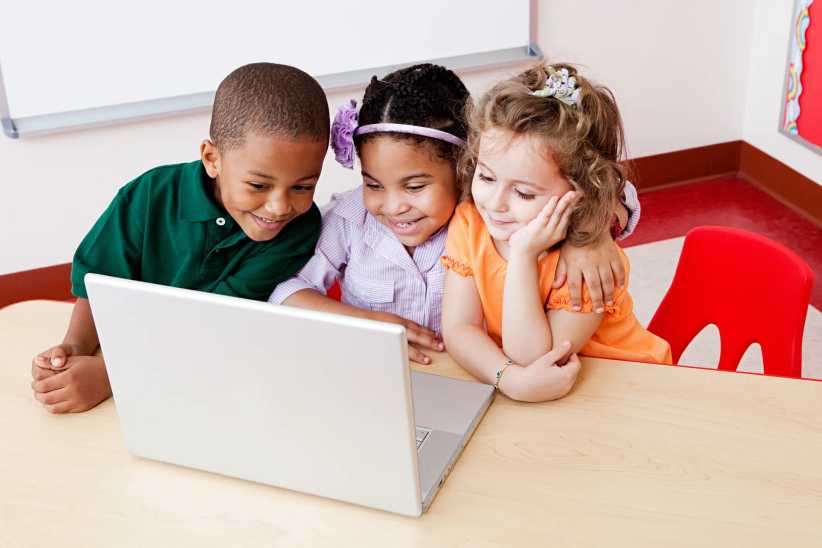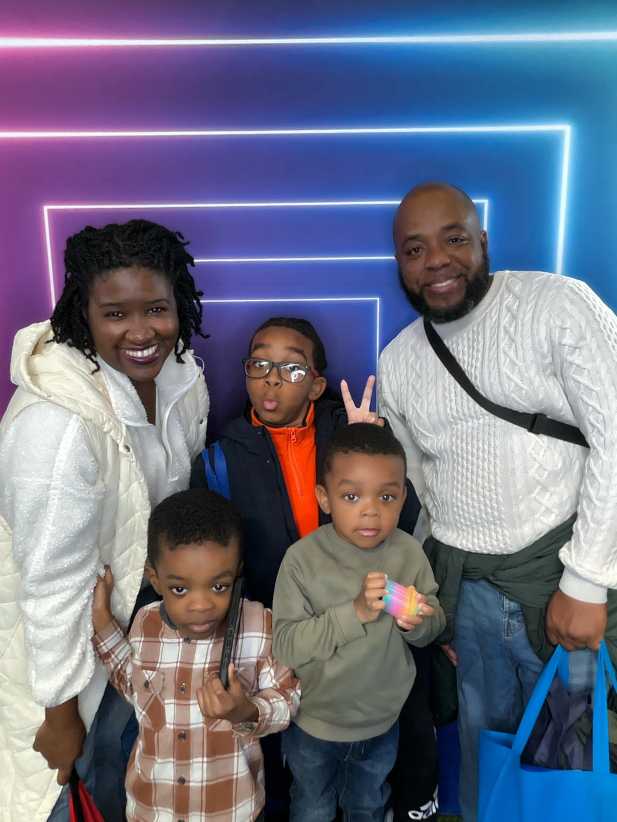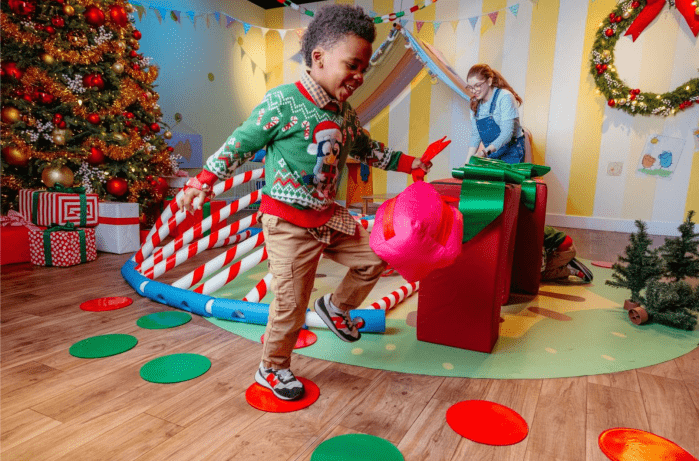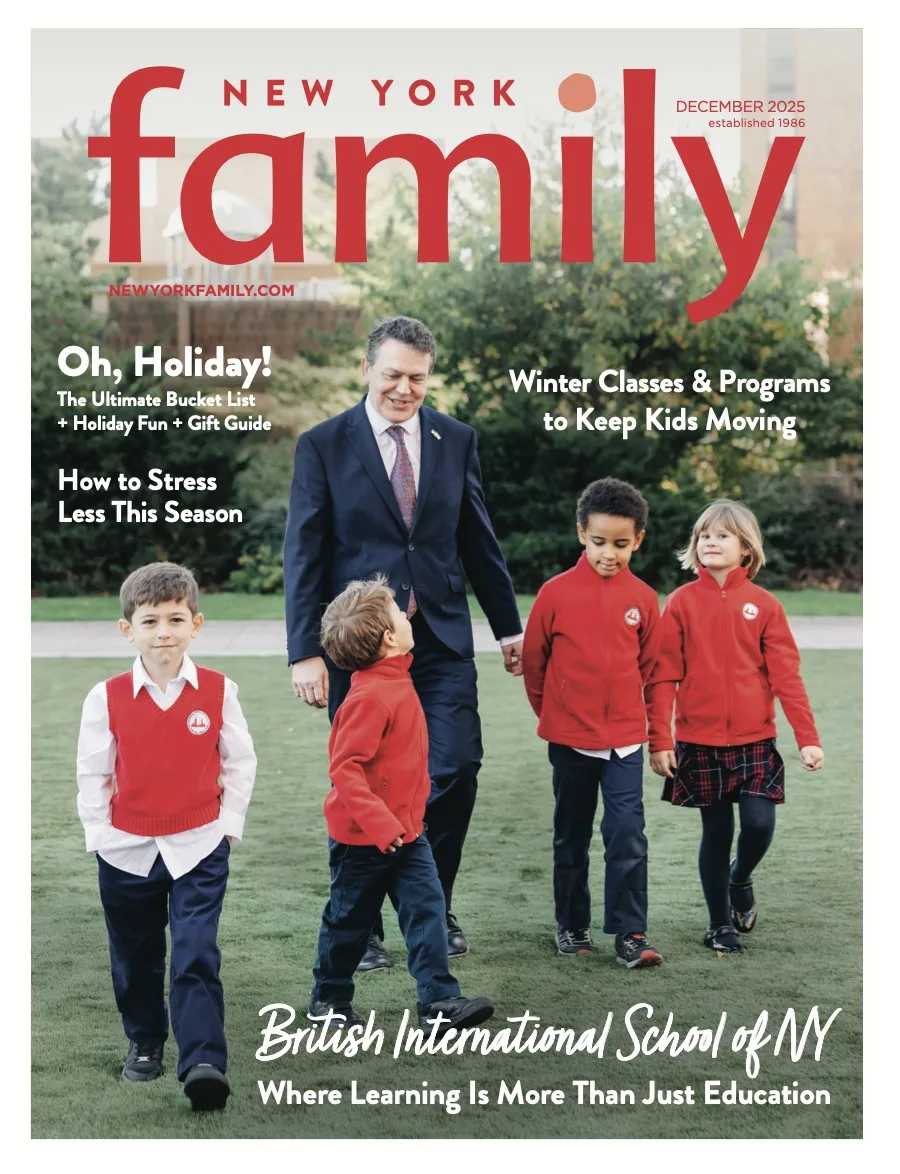
In an ever-more technologically-advanced, globally-connected, and information-saturated world, the question of which skills are essential for success, happiness, and fulfilment is greatly important. And the question is especially weighty when you look at it in terms of teaching these skills to children. Fortunately, in New York City and around the world, scores of passionate educators and experts are driving exciting trends in the classroom to prepare youngsters for life in the 21st Century. Here, we’ll shine a spotlight on education trends in STEM/STEAM, language learning and immersion, digital literacy, and global citizenship and community-building.
Full Steam Ahead!
Without learning how to problem-solve and think on their own, students won’t gain the proper 21st Century education needed to prosper in this tech-enriched world—that’s where the popular concepts of STEM (science, technology, engineering, and math) and STEAM (science, technology, engineering, arts, and math) come in. “Young people are natural explorers, scientists, and problem-solvers. They need to have opportunities to explore their natural interests, be creative, and collaborate during the school day,” Matt Moran, Director of Technology and Innovation at Dwight School, says.
“If students begin to understand the fundamentals at a young age and be comfortable with modern-day technologies like coding and design-thinking, then when they enter the workforce they will have a whole new array of tools available to them to solve modern-day problems and challenges,” adds Eli Kariv, founder of Coding Space. It feels like now more than ever, it’s severely important for young people to understand the ins and outs of STEM prior to graduating into the real world.
Due to a rise in jobs and interest from students, schools have modernized their teaching methods. “Modern STEM trends include the notion of how science is applied as opposed to straight memorization and knowledge acquisition,” says Anne Bellec, Head of Enrollment at AltSchool. “To be engaging and relevant to students, science education should be interdisciplinary, inquiry-driven, and come alive using current research on teaching and learning.”
Among educators and experts, there certainly seems to be a feeling that there’s a clear trend in the way various schools and programs are choosing to teach students about STEM/STEAM, and these trends put design-thinking at the forefront in schools. “Instead of thinking about how a robot works, students can actually create a robot that does what they want to do,” Kariv says. “Instead of learning about how games are built, students build those games and can play them and share with their friends.”
Bellec describes AltSchool’s method in the same vein: “Designing an interactive STEM program that asks real-world questions and engages students in the scientific thinking is a critical part of our program. Students begin their science journey by addressing an essential question, then seek to understand the concepts and build models to find solutions to a problem.” It seems that if educators put the problem in the students’ hands, they’re more enthralled and tend to learn more through action rather than just listening and notetaking.

“[Design thinking] has become more and more prevalent in STEM education. This has also contributed to a greater emphasis on entrepreneurship education, as students seek to apply their design-thinking skills to identify problems and develop solutions that will have an impact,” Moran notes.
Of course, in the middle of all of this discovery and teaching, there are always new and exciting innovations coming down the pipeline. “There’s a growing need for schools to be able to teach new subjects and content matter that is not yet developed,” Kariv says, adding: “Whether it’s the boom of block-chain, developments in AI, or new robotics and drone technologies, students and parents are interested in learning modern-day advancements in engineering and technology.”
Bellec says it’s important to continuously ask questions to ensure that little learners experience the different areas of science literacy. “We will continue to build learning experiences that deepen their understanding of the world and how it is evolving, and engage them in active projects that will have meaningful impact in their environments today,” she adds.
While it is exciting to know that all of these new questions and ideas are constantly popping up in the STEM and STEAM world from esteemed scientists, it’s \ a good idea to see how these changes and innovations are affecting students and ensure they know how to handle it.
“As technology professionals and researchers grapple with these ethical questions, it’s also a good time for us as educators to pause and reflect on the impact that technology has had on our children as learners and all of us as citizens of our local and global communities,” Moran says. “There is a renewed emphasis on teaching ethics, and especially on the connections between ethics and technology.” –Alex Taylor
For the Love of Language
Language learning in the 21st Century goes beyond memorizing words on a notecard for the sake of an easy A in class. Now more than ever, it’s imperative for children to understand the culture and world around the language in order to comprehend and fully absorb the material in a way that will set them up for success for the remainder of their academic career.
Monna Istranyi, the National Director of Admissions at the Polis World School, knows that if students don’t understand the culture surrounding a language, they won’t be learning at their highest potential. “It is culture that provides the context necessary to understand language and all its expressions, colloquialisms, and unique attributes,” she says. “This is precisely why culture and language must be both taught, studied, and learned side-by-side—not as separate areas of learning, but rather as integrated aspects of the child’s endeavor to master any language.”
Founder and CEO of HudsonWay Immersion School, Sharon Huang, has a similar take on language-learning: “Language and culture are inseparable as any language is the window into that culture,” she says. “Culture is embedded in language.”
Plus, putting children in immersion programs at a young age exposes them to instructors who are from other countries, allowing them to have experiences that go beyond the normal American classroom. “Teachers who are native speakers from another country can relay stories, songs, idioms, mannerisms, and perspectives from those countries. In this way, students learn to understand and appreciate cultural diversity and are better equipped in navigating the world,” Huang explains.
“We start off the year asking students: ‘Why do we learn languages?’ One of the most common answers is: ‘So we can talk to more people from around the world.’ The purpose of language is to communicate with people, and students want to learn about those people,” says Julie Yankowitz, the Immersion Coordinator at Avenues: The World School. When children meet with people from other countries, they become authentically curious to learn more!
More than learning a new language just to know it, dedicating time to other cultures expands the way children think and view the world around them. “When we learn the language of another culture, we begin to see how people think,” Istranyi says, adding: “We become introduced to and familiar with the basic framework of all thought and communication. And then our own minds naturally begin to adopt and integrate aspects of this framework into the ones we initially developed, thanks to our first language.”
And in addition to expanding one’s mind, children’s emotional intelligence is affected and expanded by this method of learning. “Appreciation leads to more compassionate and empathetic relationships between people of diverse languages, countries, and racial/ethnic backgrounds,” Huang notes.

Schools like the Polis World School and HudsonWay Immersion incorporate new techniques into the classroom that show great improvement in children’s learning. At Polis, they took language immersion and combined it with the ever-popular Montessori method. “In Montessori immersion classrooms, children learn everyday vocabulary through activities such as care of the environment, care of the person, and social relations,” Istranyi says. “Instead of learning the target language, children learn in the target language. Under these conditions, the child acquires a second language in the same effortless way that they learned their first—by hearing it and eventually producing it themselves.”
HudsonWay Immersion begins their immersion process at 2 years old when the brain is demanding of language. “The students reach proficiency (oral and literacy) within a 5-6 year period. HWIS students are world navigators who speak, read, and write in diverse languages and who demonstrate cultural competencies and emotional intelligence,” Huang adds.
Exposure to languages and cultures also happens a lot outside of the classroom through experiences. Traveling abroad, camps, and technology-supported language programs are all ways for students to absorb information without feeling like they’re sitting through another lecture.
Plus, the earlier that a child is exposed, “the stronger the language proficiency and the more lasting the understanding,” Huang emphasizes. That’s why HudsonWay is working on relationships with sister schools in other countries to give students the opportunity to travel and work on collaborative projects in new cultures. –Alex Taylor
Being Smart About Tech
We’ve all seen a messy student; when he opens his bag, crumpled, stained papers fly out. His folders are stuffed and a pen’s exploded somewhere along the bottom lining. We can already tell he needs help getting organized.
Enter technology. If every child works off of a laptop or tablet, they’ll be more organized, right?
Not necessarily. Ask Ana Homayoun, author of Social Media Wellness: Helping Tweens and Teens Thrive in an Unbalanced Digital World and, fittingly, That Crumpled Paper Was Due Last Week. “The No. 1 thing I’ve seen more and more is that crumpled papers are now digital and not fully realized,” Homayoun says. “Kids don’t always have those organizational skills—knowing how to name files, where to put them, how to figure out things—so they’ll spend hours trying to figure out: ‘Oh, where is that document’…kids were dealing with the anxiety that comes from so many different documents and places to find things.” Today’s kids are just as disorganized as those before them; it’s just far harder to know.
Rukmini Ravikumar, the director of education at Cooper Hewitt Museum on the Upper East Side, agrees that kids need to be taught media literacy and organization by adults so that they can learn effectively. “Even our younger audiences are about as overwhelmed with technology as older audiences are,” she says. “That is because while they have a lot of information at their fingertips, they still need someone to curate that for them, to help them interpret it, to help them manage and organize it.”
Even though today’s kids are growing up with technology engrained into their daily lives, it’s still important for parents to enforce certain habits and discipline—just because your kid knows how to use Instagram at 5 years old doesn’t mean they possess the skill of organization or have a more innate understanding of handling multiple notifications and assignments.
“Students are now dealing with this ultimate paradox: That the same tools that they use to complete their homework are their biggest distraction from getting work done,” Homayoun adds. “Teaching kids how to compartmentalize their work and focus their time is more important than ever before.”
All the same, the best way to bring tech into the classroom, Ravikumar suggests, is seamless integration. Teachers used to ban cell phones; now, she says, they’ll use them as a way to hold kids’ interests—use your phones to look up the topic you’re learning about.

“[The technology] is with them: It’s part of the world that they live in, it is how they interact with the world,” Ravikumar says. “Why not reinforce positive interactions and use it as an opportunity, rather than making it seem like that is bad behavior? When the rest of their life expands to validate using it?”
Common Sense Media’s director of education editorial strategy, Tanner Higgin, adds that you have to be realistic when it comes to technology in the classroom: It’s not going away any time soon. Instead, strive for balance between on- and off-device time. He suggests a device-free dinner as a way to remind kids that tech isn’t a constant.
But as kids use technology more and more in daily lives and education, there’s something else parents need to be aware of: Namely, privacy and safety. “One of the biggest things is parents need to know what apps their kids are using in the classroom and what data is being shared with those apps,” Homayoun says. “Different apps are coming out all the time, and educators are just trying to keep up and offer the latest and greatest in their classrooms, and they may not fully recognize what kind of information and data their kids are sharing just in the name of finding a flashcard app or a geography app.”
Some apps do allow parental controls, and recently iPhones began to offer the ability to see how much screen time a child uses overall and on specific apps. Understanding why and how your child uses certain apps (“Is it the quantity of information? Is it the easy access? Is it that they can talk to other people? What is it that they are interested in and how can you help them use that well?” Ravikumar asks) is far more effective than restricting their online interactions outright.
And don’t forget, kids aren’t immune from the anxiety that technology causes. “Parents can often underestimate how information overload contributes to anxiety with kids,” Homayoun says. “Another thing that parents can do is really important is create daily and weekly digital detox times for kids to be offline, especially if they’re using technology for school.” –Caitlin Wolper
Creating Connections in a Global World
It’s undeniable that as the world becomes more connected through modern technology, thinking of one’s self as a global citizen is of ever-increasing importance. For young students still learning about who they are, what their heritage is, and where they fit into the world, having resources at school that help them learn what it is to be a global citizen—as well as how to be an active community member where they live—is essential. Here in NYC, there are a number of international schools leading the way in educational trends related to global citizenship and community-building.
One such school is Wetherby-Pembridge School on the Upper East Side—an American expansion of British sister schools, notable for following the British National Curriculum and for its equal emphasis on putting down roots in NYC and maintaining a link to British traditions. “We have a very successful program that has started this year called Notable Neighbors—it’s a way for us to be able to assimilate ourselves into the local community here in New York in a very authentic way, and often, [it’s a way] for the children to identify what makes them citizens, both now and in the future,” says Kate Bailey, the Head of School at Wetherby-Pembridge. “At the same time, we’ve also been helping the children to understand that the world is a very small place and we’re part of a larger group of successful schools back in the UK—we’re engaging in some wonderful educational projects, global citizenship, sharing of educational ideas and themes. In November, our Kindergarten and grade 1 students here in New York are Skyping back to the UK with one of our sister schools in London to compare November educational themes: We’re going to talk about Thanksgiving and they’re going to give feedback on Guy Fawkes and Bonfire Night…just really engaging in that sense of community and connectivity.”
[gravityform id=”18″ title=”false” description=”false” ajax=”true”]
Andrew Hume, Driector of Enrollment at the Calhoun School on the Upper West Side, also stressed the importance of helping children to make global connections. “Today’s students are able to learn from and influence people from around the globe. We have the opportunity to construct an education that situations students in the center of global learning, thinking, and problem solving,” he says. “We practice democracy within our institution, which allows students to develop confidence and use their voice to advocate for justice in the broader world.”
The concept of weaving local engagement with global connections is one that’s also present at the British International School of New York in Kips Bay, which boasts students from 45 different countries. With such a diverse student body, it’s a no-brainer to bring education about different cultures into the classroom. “It’s [all about] recognizing and celebrating the students from different countries, backgrounds, traditions, and religions,” says Jason Morrow, the Head of School at BIS-NY. “For us, we really want [students] to be outward looking; we want them to try to understand that people have different perspectives and different values and different expectations, and sometimes different concerns and things that they’re worried about. We want them to understand what it’s like to experience the challenges of growing up in different communities or different regions and situations—that helps them to develop their empathy and it also helps to give them a more well-rounded understanding.”
Morrow also adds that, while teaching concepts like global citizenship can be a complex task, it’s sometimes the most simple of activities that help to highlight common threads between students of different backgrounds, therefore teaching the importance of being a citizen of the world. “We do a family games night, which is a very simple idea—it’s an evening where we encourage families to bring in traditional games from whatever part of the world they’re from, and to share with others. There’s some food and music from different regions,” Morrow explains. “A beautiful thing about it is that you get the children and the adults to see some of these common themes of play and engagement from different parts of the world; and they may have slightly different names or variations on the rules, but the common humanity comes through very strongly in that sense of play.”
In the same vein, Bailey notes that having sister schools in the UK has been an essential component in helping students fully comprehend why it’s beneficial for them to grow up seeing themselves as global citizens and as part of something larger than themselves. “It helps extend their sense of identity and it helps them to appreciate and understand different cultures; it helps them to understand the unifying experience of education and the experiences of children their same age in different parts of the globe,” she says. “What we’re really trying to promote against this idea of connectivity within our group of schools…it’s to help the children realize that they’re part of something larger.” –Mia Weber

